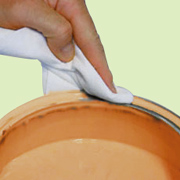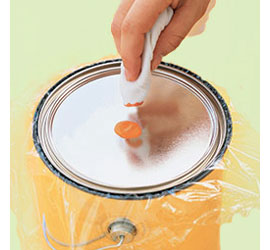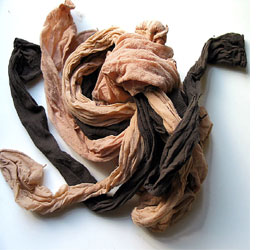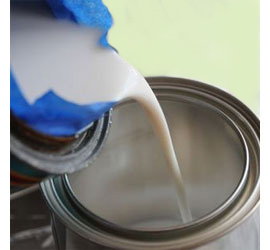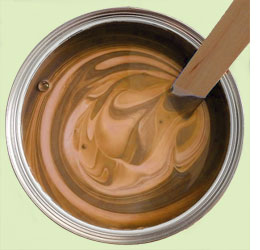How to store leftover paint
Like everything else, the price of paint has gone up. While it's always a good idea to keep some paint for touch-ups or small projects, storing your leftover paint allows you to keep it for a couple of years and use it when and where you can.
Here are some tips for storing paint:
Seal it quick
As soon as you open a can of paint it starts to cure. For this reason it is best to pour out small amounts into a paint tray for immediate use and close the lid on the paint tin to prevent the paint from curing.
Wipe around the lip of the tin to remove any paint and then cover the paint tin with cling wrap before closing the lid. This will help create an additional seal when the tin is closed and put away. If paint is supplied on a plastic container, wipe around the rim and use the heel of your hand to pop the lid closed all the way around.
Store sensibly
Store paint away from extreme heat and cold to avoid spoilage. If paint is stored in a cool, dry place it will last much longer. All paints should be stored out of reach of children and pets.
Label your paint
Take the time to mark each tin of paint after use you will find it easier when you need it. If the paint tin has an original label - leave it on. Apply a dab of colour to the label - or the lid - to make it easier to identify the paint colour. If you also record the details of where the paint was used, it will be quick and easy to perform touch ups later on.
Clean paint
If your paint does develop a skin on the surface, use an old pair or nylon stockings, a fine mesh sieve, or muslin to filter out contaminates so that these will not spoil the painted finish. Have a clean container for the filtered paint. Hold the stocking over the container and pour the paint into the stocking.
Where the rim around the tin is full of debris or rusty, wrap wide masking tape around the inside of the rim to allow you to pour the paint into a new container.
Stir paint
When paint has been sitting in storage for a while it tends to separate. Always stir paint before you use it to ensure that the paint is mixed properly. If the paint has thickened, use a small amount of water to dilute, stirring well into the paint.
Dispose of paint
When it comes to throwing out or disposing of paint, it's critical to do it in a way that won't cause pollution to drinking water or soil. One 5 litre tin of paint can contaminate thousands of litres of water, harm aquatic fish and plant life, and eventually, poison the food chain. Click
here for some safe, effective ways to dispose of acrylic and oil-based paints.

